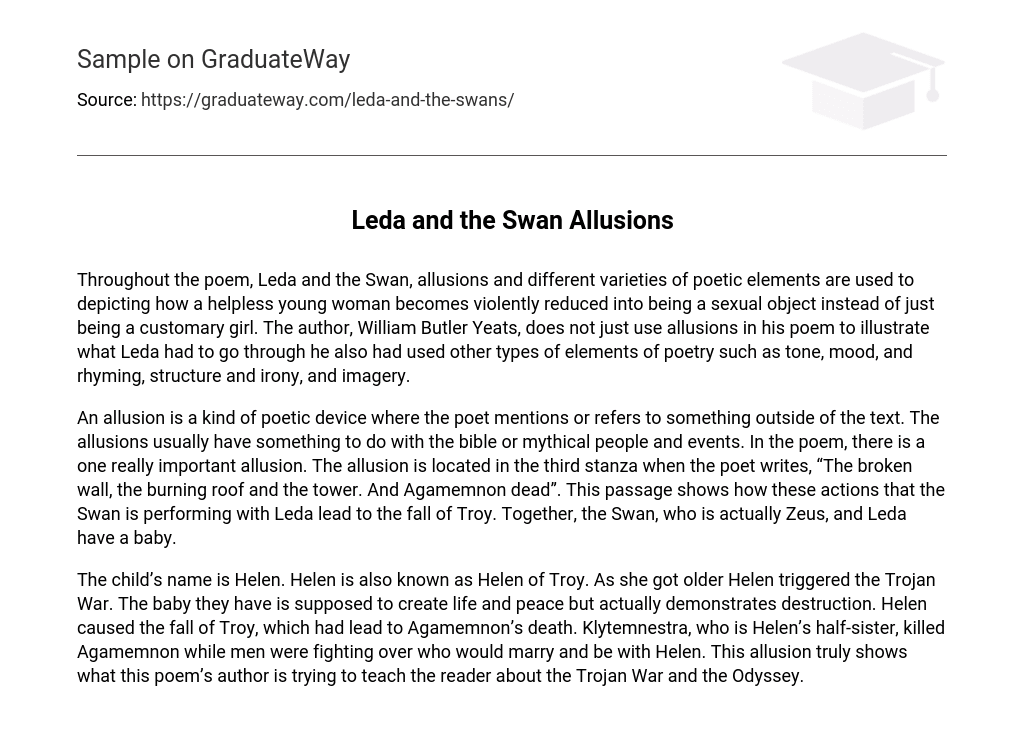Throughout the poem, Leda and the Swan, allusions and different varieties of poetic elements are used to depicting how a helpless young woman becomes violently reduced into being a sexual object instead of just being a customary girl. The author, William Butler Yeats, does not just use allusions in his poem to illustrate what Leda had to go through he also had used other types of elements of poetry such as tone, mood, and rhyming, structure and irony, and imagery.
An allusion is a kind of poetic device where the poet mentions or refers to something outside of the text. The allusions usually have something to do with the bible or mythical people and events. In the poem, there is a one really important allusion. The allusion is located in the third stanza when the poet writes, “The broken wall, the burning roof and the tower. And Agamemnon dead”. This passage shows how these actions that the Swan is performing with Leda lead to the fall of Troy. Together, the Swan, who is actually Zeus, and Leda have a baby.
The child’s name is Helen. Helen is also known as Helen of Troy. As she got older Helen triggered the Trojan War. The baby they have is supposed to create life and peace but actually demonstrates destruction. Helen caused the fall of Troy, which had lead to Agamemnon’s death. Klytemnestra, who is Helen’s half-sister, killed Agamemnon while men were fighting over who would marry and be with Helen. This allusion truly shows what this poem’s author is trying to teach the reader about the Trojan War and the Odyssey.





